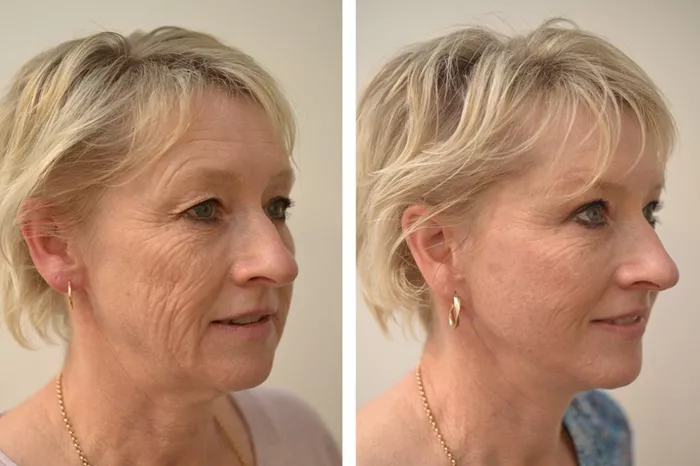Rhinoplasty, commonly known as a nose job, is a surgical procedure that changes the shape or function of the nose. It can address both cosmetic concerns and medical issues like breathing problems. As people age, they often consider rhinoplasty to improve their appearance or resolve long-standing nasal issues.
The Basics of Rhinoplasty
What is Rhinoplasty?
Rhinoplasty is a surgery that alters the nose’s shape. It can reduce or increase size, change the shape of the tip or bridge, narrow the nostrils, or adjust the angle between the nose and the upper lip. The surgery can also correct structural problems that cause breathing difficulties.
Types of Rhinoplasty
Open Rhinoplasty: Involves a small incision on the columella (the tissue between the nostrils). This approach provides better visibility and access for the surgeon.
Closed Rhinoplasty: All incisions are made inside the nostrils. This method leaves no visible scars but offers less access for complex reshaping.
Functional Rhinoplasty: Focuses on resolving breathing issues due to structural defects like a deviated septum.
Cosmetic Rhinoplasty: Primarily aims to enhance the nose’s appearance and balance facial features.
Age Considerations in Rhinoplasty
Physical Considerations
Skin Elasticity: Younger patients often have more elastic skin, which can adapt better to the new shape of the nose. However, many people in their 50s still maintain good skin quality.
Healing Process: Older adults may have a slower healing process. It’s essential to have a realistic expectation of the recovery timeline.
Medical History: As people age, they might have more medical conditions that could affect surgery. A thorough medical evaluation is necessary.
Psychological Considerations
Motivation: Older patients may have different motivations compared to younger ones. They might seek rhinoplasty to address lifelong insecurities or recent changes due to aging.
Expectations: It’s crucial for patients to have realistic expectations about the outcome. Discussing goals and potential results with a surgeon helps align expectations.
Emotional Readiness: Patients should be emotionally prepared for the changes in their appearance and the recovery process.
Benefits of Rhinoplasty for Older Adults
Aesthetic Benefits
Facial Harmony: Rhinoplasty can improve facial balance, making the nose proportionate to other features.
Youthful Appearance: Adjusting the nose can contribute to a more youthful appearance, enhancing overall facial aesthetics.
Confidence Boost: Many older adults find that improving their nose’s appearance boosts their self-esteem and confidence.
Functional Benefits
Improved Breathing: Correcting structural issues like a deviated septum can enhance breathing, improving overall quality of life.
Better Sleep: Addressing nasal blockages can lead to better sleep, reducing snoring and sleep apnea symptoms.
Enhanced Physical Activity: Improved breathing can make physical activities more enjoyable and less strenuous.
See also: 8 Questions to Ask Before Your Rhinoplasty
Risks and Considerations
Surgical Risks
Anesthesia Risks: Older adults might have a higher risk of complications from anesthesia. Pre-surgical assessments are essential.
Infection: As with any surgery, there’s a risk of infection. Proper post-operative care reduces this risk.
Scarring: While rare, there’s a possibility of visible scars, especially with open rhinoplasty.
Health Considerations
Chronic Conditions: Conditions like diabetes, hypertension, and heart disease need careful management before surgery.
Medication Interactions: Older adults often take multiple medications, which can affect surgery and recovery. A detailed medication review is necessary.
Bone Density: Age-related bone density loss can affect the surgical outcome. Surgeons need to consider this when planning the procedure.
Recovery Process for Older Adults
Initial Recovery
Swelling and Bruising: These are common after rhinoplasty and may last longer in older adults. Cold compresses and elevation help reduce swelling.
Pain Management: Over-the-counter pain relievers usually suffice. Stronger medications might be needed but should be used cautiously.
Follow-Up Care: Regular follow-up appointments ensure proper healing and address any concerns promptly.
Long-Term Recovery
Gradual Results: Full results can take up to a year. Patience is crucial as the nose settles into its new shape.
Skin Care: Keeping the skin moisturized and protected from the sun aids in healing.
Lifestyle Adjustments: Avoiding strenuous activities and following the surgeon’s advice on wearing glasses and other habits is important for recovery.
Choosing the Right Surgeon
Credentials and Experience
Board Certification: Ensure the surgeon is board-certified in plastic surgery or otolaryngology.
Experience with Older Patients: Choose a surgeon with experience performing rhinoplasty on older adults. They will understand the unique challenges and considerations.
Portfolio: Review before-and-after photos of previous patients to assess the surgeon’s skill and aesthetic sense.
Consultation Process
Open Communication: A good surgeon listens to your concerns, answers questions, and discusses realistic outcomes.
Comprehensive Evaluation: A thorough medical evaluation and discussion of your medical history are essential.
Customized Approach: The surgeon should create a personalized surgical plan that considers your specific needs and goals.
Conclusion
Age alone should not be a barrier to rhinoplasty. Many people in their 50s successfully undergo the procedure, enjoying both cosmetic and functional benefits. However, careful consideration of physical health, psychological readiness, and choosing an experienced surgeon are critical to achieving the desired outcome. With the right approach, rhinoplasty can be a rewarding experience at any age, enhancing both appearance and quality of life.
Related topics:
How Long Does Non-Surgical Rhinoplasty Take?
Best Age To Get A Non-Surgical Nose Job
How Long Does Open Rhinoplasty Take?


